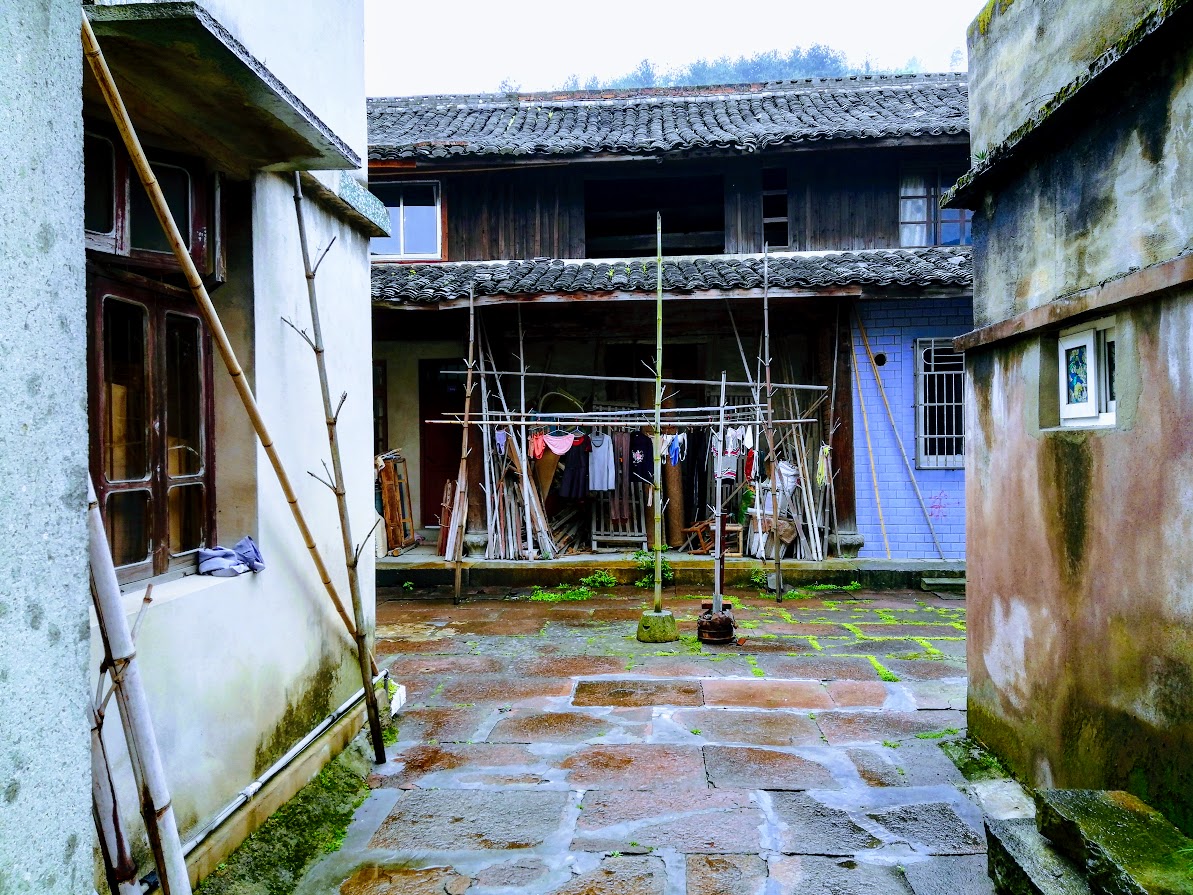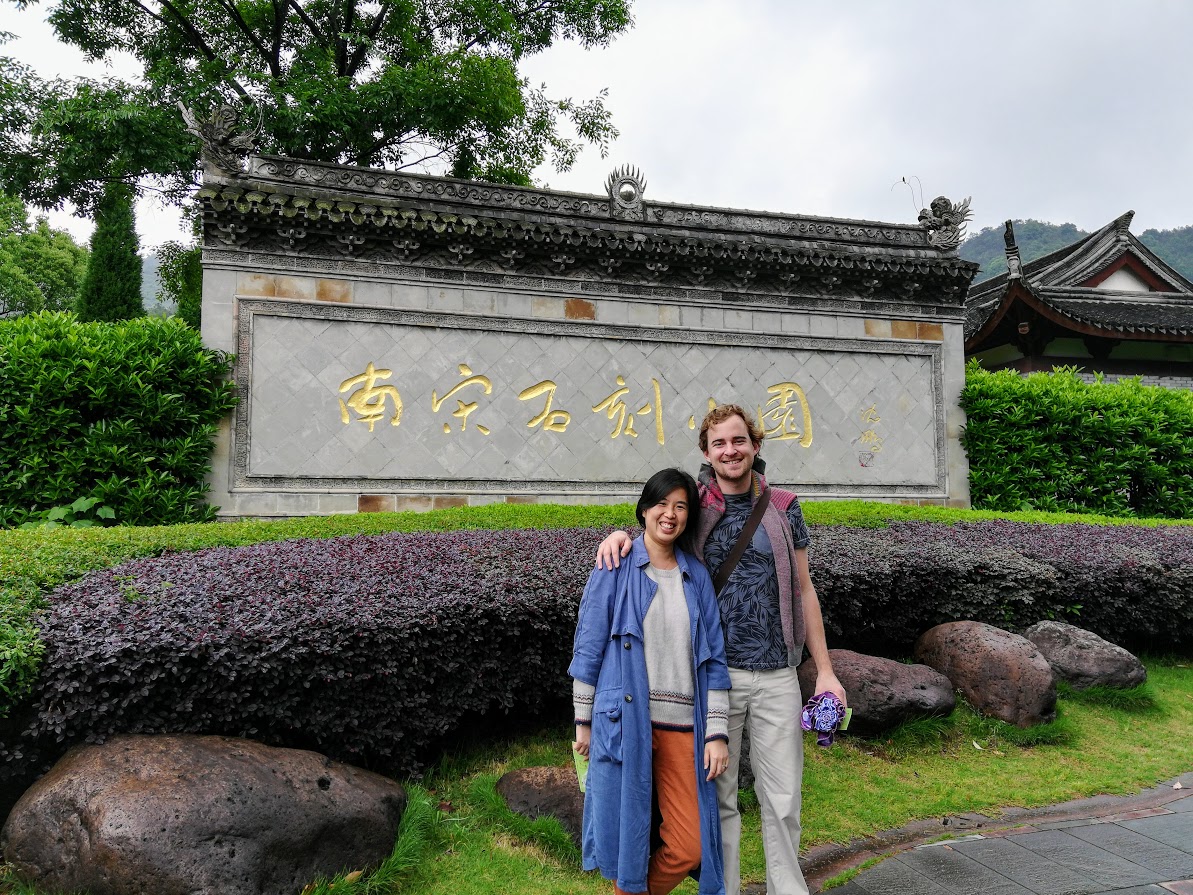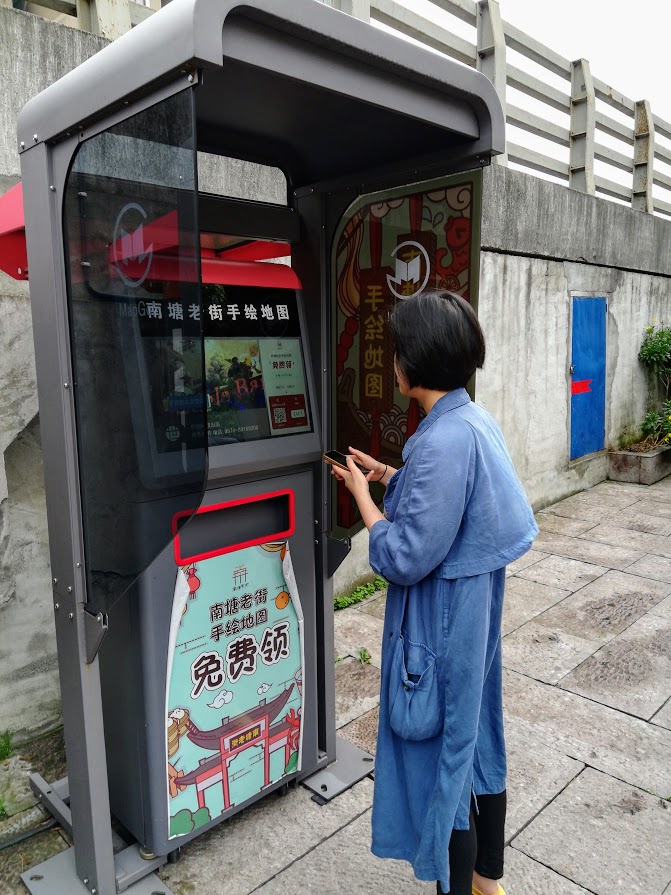Dongqian lake is the largest freshwater lake in Zhejiang, and a relatively popular weekend trip destination from nearby Ningbo, my wife’s hometown. During our last trip to China this May, a friend of hers took us there for a really nice day trip.
The lake surroundings are quite popular today: besides the weekend trips such as ours, the shores are dotted with very luxurious houses, many of them in a quite western style. There is even a Hilton resort, though I did not see it.
Our first stop was an ancient village on the shore (Hanling / 韩岭村), now being transformed into a luxury hotel. Parts of the village are still inhabited – though it seems a lot of people left for the city in previous years. The rest has been divided between houses that still stand, which are being refurbished for the hotel, and those that are beyond repair, which are destroyed before being replaced with modern, similarly styled houses.
It should be interesting to come back here in a couple years, to see how the area has evolved !

Southern Song Stone Carvings
Dongqian lake is also home to a large open-air museum and park, the Stone Carvings of the South Song Dynasty Museum.
The region around Ningbo was at the center of a part of Chinese dynastic history: the Southern Song dynasty, the last indigenous chinese power to resist against the mongol invasion during the mid-twelfth to the mid-thirteenth century, had nearby Hangzhou as its capital. Many high officials of the dynasty came from the region.

Several of them, thus, were buried around Dongqian lake, in what is today a large park near the lake, which was a real highlight of our short trip.
We stopped for what we initially thought would be a short stroll in the museum and the park. However, after the (pretty good!) indoor museum and a first walk towards one of the most elaborate tombs. we discovered the park is actually huge.
We ended up walking about two hours!
One of the main features of the park are the groups of stone statues that surround the different tombs – there are animals, soldiers and scholars, with the number of statues indicating the importance of the tomb’s owner.
More recent historical events have also left their mark on the park. During the cultural revolution, red guards “visited” the park and cut the noses of many of the statues – as well as parts of the animal statues. Today, most of the statues are indeed missing their noses.
Tandem bikes and scenery
Finally, the lake also simply makes for a great stroll or bike ride. When returning, we spotted a small bike rental place. They even had tandem bicycles – since I was with Shuyang, we decided to try one! It was a bit unstable at low speeds (and the rear seat had very, very little space for the knees!), but quite fun to ride. We went for about an hour around parts of the lake, with really beautiful views.
All in all, I really discovered something new near Ningbo – the lake makes for a wonderful day trip from the city. Besides the quiet and the beautiful scenery, the village and the excellent stone carvings park are well worth a visit.
Back to the City
It seems I still have a lot to discover in Ningbo. While this was my third time in the city, the first was very short, and the second was for the wedding, so I had little time besides the ceremony. This time, I had four full days, of which we took great advantage!
The first and most obvious stop was the TianYiGe (天一阁), the oldest surviving private library in China (and in Asia, if I understood well). It’s a worthwile visit, with good exhibits on the history of the library, and the challenges it had to face over the centuries.
Some of the places I discovered were new, as Ningbo, like most cities in China, changes very, very fast. Something I noticed on this trip (and not only in Ningbo), is that there is more focus on highlighting the heritage of cities than in previous years. Hanling village on Dongqian lake is an example of this, as is the excellent Nantang Old Street. About one year old, it’s a reconstitution of old, local style buildings, full of shops, and mostly restaurants and street food stalls. Shuyang took me there for several hours on the first afternoon. We got a series of snacks, of which the fried stinky tofu (fermented tofu – really stinky as you can usually pick the smell a couple blocks away – deep fried, and then served with a spicy sauce and herbs), and the Xinjiang kebab and bread were particularly good.
The street also has a cute automatic map machine, something we’ve found in several places in Ningbo (and that Shuyang loved!). You just need to scan a QR code using wechat, and the machine prints for free a nice map of the area! Other places with those machines include TianYiGe library, the subway mall, and the bar area.

At night, Ningbo also boasts a really nice bar district in a series of old buildings in Laowaitan. There’s quite a bit of variety: many of the bars are quite low-key, and others seem to “move” a lot more. The main one we tried (Jianghu) had live music, with a truly very good band, and an excellent atmosphere. We also spotted at least one craft beer bar, and a mojito specialty one.
Good places to go out are not limited to laowaitan, though! Shuyang took me the next day to the most modern mall of the city – the area was quite interesting – particularly for food, as the malls (as often in China) had truly excellent food selections.
We also found a really excellent craft beer bar, that had literally hundreds of beers from China and abroad, plus some cool games! We took the occasion to make a break in our afternoon walk, as well as play some pool!
The subway was also new! I had seen it under construction the first times I had been in Ningbo, but this time two lines (out of seven planned) were operational. The underground mall linking two of the central stations is pretty cool (and full of food places too!).
























